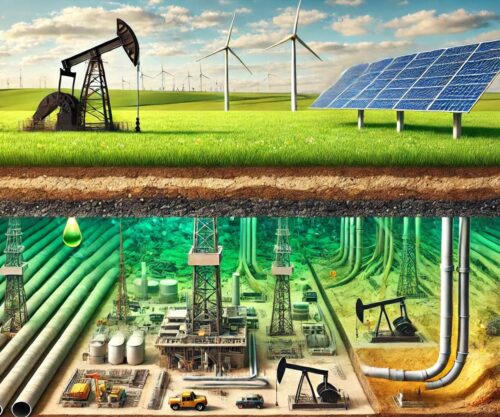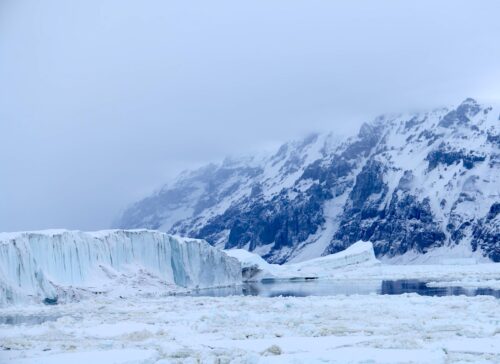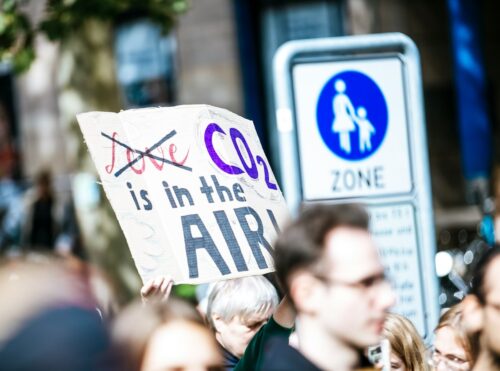 Canadian Prime Minister Justin Trudeau’s government had a rough year in 2022 on the climate change file.
Canadian Prime Minister Justin Trudeau’s government had a rough year in 2022 on the climate change file.
Let’s review the events and help him make a resolution for 2023.
2021 ended with the 26th annual Conference of the Parties (COP) in Glasgow, Scotland failing to agree to phase out their fossil fuel public enemy number one: coal. Demand rebounded in 2022 and worldwide coal consumption is now forecast to hit an all-time high in 2023.
Early in 2022, the Intergovernmental Panel on Climate Change (IPCC) released the balance of its Assessment Report 6 (AR6) series, which the United Nations (UN) Secretary General proclaimed was a “Code Red for Humanity.”
The AR6 reports were met with a barrage of international criticism for deceptive reporting practices, overstated warming forecasts, and exaggerated future impacts. [emphasis added]
Then the failure of European solar and wind energy technology (also promoted by Trudeau for use in Canada) enabled the 2022 Russian invasion of Ukraine.
The salt in the wound was that Europe inadvertently funded the Russian military through the purchase of Russian natural gas and oil at inflated prices.
In 2022 NASA reported that during the pandemic, carbon dioxide (CO2) emissions were reduced by 5.4% globally, yet the concentration of CO2 in the atmosphere went up at about the same rate as prior to the pandemic.
One could infer from this that there are human and/or natural emission sources we don’t know about, and if Canada eliminated its 1.5% of global CO2 emissions, which is Trudeau’s Net Zero 2050 pledge, it would make no difference in the atmosphere.
Trudeau’s previous declaration of a climate emergency also fell apart in 2022. Despite the atmospheric concentration of CO2 growing by 13% since 1998, the global average temperature as measured by satellites is no higher than in 1998.

According to the International Energy Agency, in the six years after the 2015 Paris Agreement was signed, approximately $3.8 trillion has been invested globally in green energy technology, yet the amount of fossil fuels consumed is unchanged.
But due to a lack of investment in fossil fuels over the same period, particularly stunted in Canada by Trudeau, the prices of oil, natural gas, and coal skyrocketed as global energy security decreased.
Trudeau rebuffed Germany’s 2022 plea for long-term liquified natural gas (LNG) supply from Canada, stating that he “…could not see the business case…” while world LNG demand surpassed all-time highs.
The year 2022 ended with the 27th COP in Sharm El Sheikh, Egypt, and the failure to agree to phase out their fossil-fuel public enemy number two: oil.
Additionally, a major loophole was created for the expanded use of their fossil fuel public enemy number three: natural gas. Meanwhile, crude oil and natural gas demand grew to near all-time highs.
The year 2022 may go down in history as the year of the demise of solar and wind green energy, or the year of confirmation that humanity cannot reduce its physical CO2 emissions quickly, cheaply, and impartially.
Or that the UN’s war on fossil fuels enabled a shooting war that the UN was created to prevent.
Because it was the 24th consecutive year without a new global temperature high, perhaps it will be the year of realization that there is no climate emergency (WCD-version-100122.pdf – clintel.org).
Nevertheless, the Trudeau government plans to maintain warp speed on the same course as they have since 2015.
Here are his three biggest 2023 climate agenda legislative files:
1) Reduce Fertilizer and Methane Emissions by 30% by 2030
This is targeted at nitrogen-based fertilizers that produce nitrous oxides (N2O) and cattle that produce methane (CH4). The cost of this plan to farmers and ranchers will be reduced yields and lower farm incomes.
The cost to consumers will be food shortages and higher prices. The cost to Canada will be a reduced GDP and reduced exports. The cost to the world’s poorest will be hunger.
Contrary to the claims of the IPCC, methane and nitrous oxide emissions from all sources, human and natural, are negligible contributors to global warming.
We now have solid, scientific method-compliant mathematics to show that it would take over 1,000 years of methane emissions and 1,500 years of nitrous oxide emissions at the current rates to each cause 1°C of global warming.
2) Increasing Fuel Carbon Tax and Ethanol Content
In Canada, we have a federal carbon tax that equates to 11 cents per liter of gasoline (31 U.S. cents per gallon). That tax will rise by 3.3 cents per liter in 2023 (9.3 U.S. cents per gallon).
In 2023, a new Clean Fuel Standard is set to be applied, which will increase the cost of gasoline by a further estimated 13 cents per liter (37 U.S. cents per gallon).
Higher prices will not reduce gasoline consumption, because the demand curve for gasoline in Canada is rigid. That means we will still buy as much gasoline as we did before because, for the most part, driving is the only way we can get to the places we need to be.
The Clean Fuel Standard will not reduce CO2 emissions, because the easiest way for refiners to meet it is to blend more ethanol into gasoline (up to 15 percent).
Ethanol produces the same amount of CO2 emissions in the same engine for the same distance driven; they are simply not counted in the total.
The cost to Canadians will be inflationary fuel prices, and the diversion of more agricultural yields from food production to fuel production.
3) An Emissions Cap on Our Largest Industry
Three of the most important facts about the Canadian oil and gas industry are:
- It is the fourth largest producer in the world.
- It can keep up this pace of production for at least another century.
- Along with the U.S., Canada is the only oil-and-gas superpower that is a free democracy.
The Trudeau government has restricted the growth of oil and gas in Canada by canceling export pipelines, banning export tanker routes, and implementing taxes on CO2 emissions from production operations.
In 2023, they are seeking to cap the total emissions from the sector, which would effectively end the growth of the industry in Canada.
There are two serious flaws in this policy for reducing CO2 emissions. First, any increase in global oil and gas demand will probably be met by an autocratic regime with little environmental transparency (the least of many unsavory attributes).
Second, we now know that it will take at least a century (more if we have clouds) for the current rate of CO2 emissions to raise the global temperature by approximately 1°C.
During those 100 years, we will probably transition away from fossil fuels, but it should be on a reasonable time scale, based on scientific innovation that is economically sound with real environmental benefits.
As Sheik Yamani, the former Saudi oil minister predicted, “The Stone Age did not end for lack of stone, and the Oil Age will end long before the world runs out of oil.”
The cost to Canadians of an emissions cap on oil and gas production is our reduced national prosperity (the industry is 5.7% of our GDP), while the cost to our allies is energy security and the enrichment of dictators.
Trudeau’s 2023 New Year’s Climate Resolution
The IPCC’s 35-year quest to reduce greenhouse gas emissions has failed, and all their forecasts of global temperature increases due to those emissions have proven to be greatly exaggerated.
The UN’s obsession with climate change set the precedent conditions for its failure to meet its charter objective of maintaining peace.
Global fossil-fuel use is growing along with CO2 emissions to new highs, causing Canada’s insignificant emissions to become even more insignificant.
Canada continues to fail to meet every emissions reduction target it has ever set, but it doesn’t matter because even current global CO2 emissions are not significantly affecting temperatures.
The logical extension to all this provides a great 2023 New Year’s resolution for Trudeau:
Stop and think it through!
Review the failures of 2022, evaluate the realities of 2023, and recalibrate climate policy based on the scientific method where physical observations eclipse contrived forecasts.
Give a reprieve to farmers and ranchers, a break on fuel prices to Canadians, and access to secure, democratic Canadian hydrocarbon energy to our allies.
Ron Barmby (www.ronaldbarmby.ca) is a Professional Engineer with a Bachelor’s and Master’s degree, whose 40+ year career in the energy sector has taken him to over 40 countries on five continents. His book, Sunlight on Climate Change: A Heretic’s Guide to Global Climate Hysteria (Amazon, Barnes & Noble), explains in layman’s terms the science of how natural and human-caused global warming work.



















Totally correct Ron. Here’s the numerical insanity. 1.8ppm of Methane and even more ridiculous is the 0.311ppm of Nitrous Oxide have greater effect than 415ppm of Carbon Dioxide. Subtracting their total from 1,000,000 gives you 999,582.889ppm which apparently has ZERO effect on atmospheric heat retention.
Almost forgot, water vapour at 20 to 40,000ppm, a GHG is ignored. Peculiar science.
Thanks Alan! Water vapour alone is about 95% of the greenhouse gas effect, and the mainstream media seems to ignore that fact.
It’s a shame that the UAH satellite data begins 1979. That was when the “experts” observed that we were slipping into another ice age. What is encouraging is that the temperature data we have accumulated from the satellites does not correlate with rise in CO2 levels. That should throw a wet blanket on the alarmism.
Sonnyhill; I agree! Satellite data is superior because it gives almost 100% global coverage, it is sourced from the same type and quality of instruments, it is not affected by the notorious Urban Heat Island effect, and can be validated with weather balloon temperatures. So of course the IPCC and mainstream media ignore it!